Note from Beth: One thing I am trying to do with my Facebook Page is to model abundant behavior. My goal is to make it an online space for peer knowledge sharing, but what I hope will distinguish it from spaces is the synthesis, sense-making, and sharing of the abundance of stories, knowledge, tips, resources. This is wisdom that is happening in real time and the curation of real-time learning.
While people are asking questions and sharing resources not related to the monthly theme (this month is measurement), quite a few are. This post harvests some of the insights shared about social media measurement and nonprofits from my Facebook Page. If you have questions or something to share, please join the conversation.
The Social Media Measurement Checklist
The best ever resource is KDPaine’s Measurement Checklist that takes you through the A to Z of setting up a thoughtful and robust measurement approach. Many nonprofits often address measurement at the end of a project or program or fiscal year, but by putting it first it enables organizations to build a thoughtful strategy.
The Challenges of Measurement: Getting Agreement on What To Measure
Folks from larger organizations identified one challenge with the first step, which is get sign off and buy in on what to measure. As one participant points out, “It is very hard to get departments to agree because Web wants one thing, Membership wants another, Communications has it’s own tracking.”
Deb Levine from ISIS shared, “Many organizations in public health area are still relying on process measures (how many visitors, how many links in, how many friends, etc.). I believe this is because it is so difficult to measure behavior change. ALSO, incredibly important measurements are the demographics of who your non-profit is reaching. Meaning, if you are a senior-serving organization and you have 1000+ friends, 80% of whom are under 30, well, enough said…. ”
Getting Started: The Importance of Small Proof of Pilots With Measurement Component
Participants pointed to the importance of small pilots. Notes one participant, “It definitely gave us the ability to work around chicken & egg conversations. “I can’t prove value unless you let me try.” “We won’t let you try unless you can prove value.”
As Judith Sol-Dyess , from the Chicago YMCA, notes, “We struggled for a long time with how to launch ANY social media efforts. In the end only one thing worked: small, “non-threatening” pilots. We also just started reporting on the metrics we already had available (web analytics, FB insights, email campaign stats) and are now moving towards more of a “digital content services” model with metrics related to specific campaigns, etc.”
How To Use Measurement To Improve Your Social Media Practice
One question that bubbled up was about specific techniques to measure or benchmark your nonprofits social media strategy and execution. What data to collect and how to use to make decisions to improve the effectiveness of your implementation? In other words, how do you measurement as a diagnostic tool?
There are specific metrics for specific platforms. For example, on Facebook, using the Insights analytics programs to measure both fan growth and interaction is important. John Haydon shared this excellent screencast providing an overview to what data you’ll find in the new Facebook Insights program. On Twitter, it is important to measure “click throughs” which can be done with bit.ly or ow.ly.
Kami Huyse notes, “You should also have an analytics program, like the free Google Analytics, installed on your website to determine where people are coming from and what they do when on your website. Other than that, it is important to have engaged fans in these networks (Twitter/FB) and you should see steady growth, but the number of fans or likes should not be your primary measure.”
A Cool Free Tool for Monitoring
KD Paine’s checklist, step 2, is to select a listening/monitoring tool, an important step in the measuremet process. As Kami Huyse points out, paid tools can be expensive, particularly for small nonprofits. She discovered a new free Beta tool called G’lerts (at http://glerts.com/) from Shonali Burke. This tool allows you to shared today, that allows you to put all of your Google Alert feeds (which many of use get by email) into a dashboard. The dashboard shows rough sentiment analysis, # of mentions and links.
The Importance of Benchmarking
Another terrific question in the Salon, “Other than benchmarking against yourself over time, are there sub-sector averages that we can look at? Here’s a quick list of benchmark studies of nonprofits and social media:
NTEN/Common Knowledge Social Network Benchmark Report
NTEN – E-Nonprofit Benchmark Study
PostRank Nonprofit Blogs Benchmarking
Digital IQ Public Sector Benchmark
And, in addition to these nonprofit and public sector benchmark reports, another approach is get a small group of your colleagues from similar organizations and benchmark each other by sharing data.
Come join the conversation.
